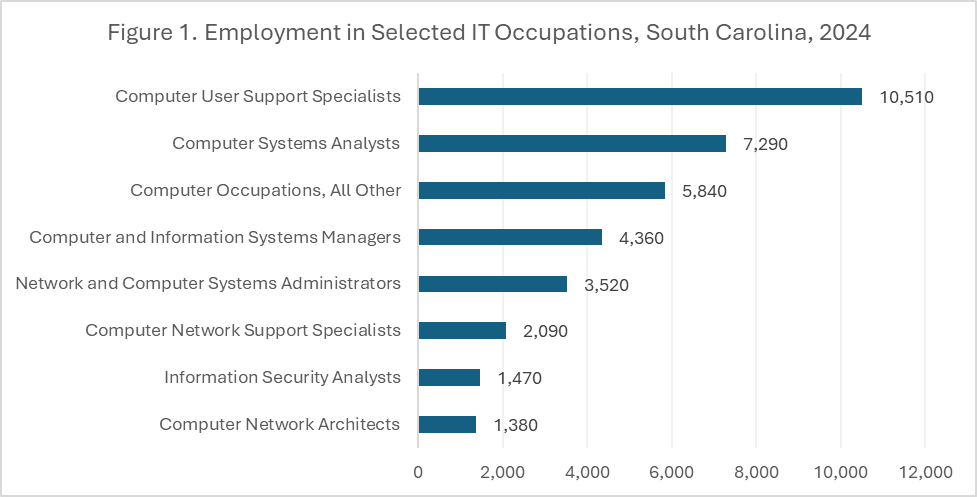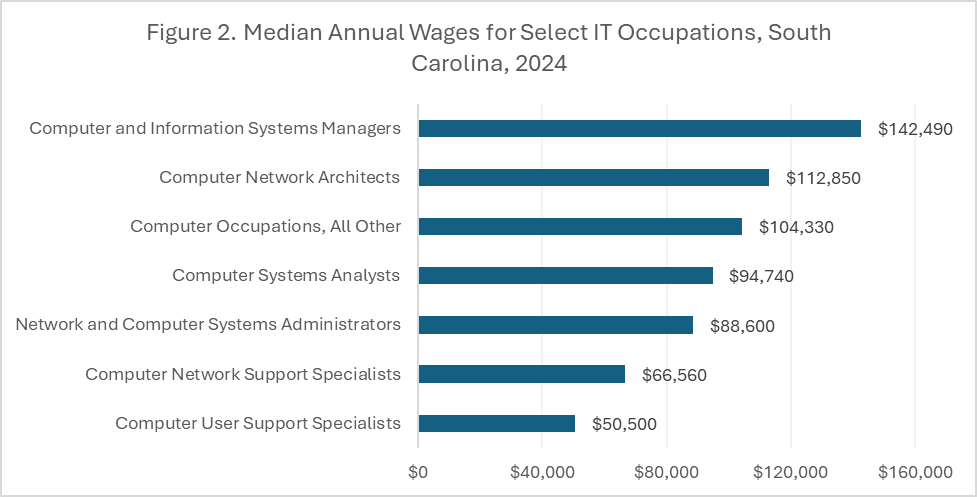MyBenefits
Apply for and certify your claim here.
 The Official Web Site of the State of South Carolina
The Official Web Site of the State of South Carolina
Unemployment Insurance claimants: Monday, October 13, 2025, is a bank holiday, which may cause delays in payments. Please check with your financial institution for more information.
Celebrating National IT Professionals Day
By Lainey Stalnaker, Data Analytics Writer

September 16 was National IT Professionals Day, which aims to highlight the essential role played by IT professionals. According to the U.S. Department of Labor’s occupational data resource O*NET, Information Technology (IT) Support and Services jobs focus on “providing setup, assistance, and problem-solving solutions for software, hardware, and other technology-related issues to ensure smooth and efficient operation of communication and data systems for individuals and organizations.” Read on for a closer look at IT jobs in South Carolina.[1]
The top IT occupation in the state is computer user support specialists, a role responsible for providing technical assistance to computer users. In 2024, 10,510 computer user support specialists were employed in South Carolina. Additionally, 7,290 computer systems analysts were employed in the state in 2024. These individuals are tasked with developing solutions to system administration and network issues, thereby improving the efficiency and reliability of computer systems.
Other IT jobs include computer and information systems managers, network and computer systems administrators, computer network support specialists, information security analysts, computer network architects, and computer occupations, All Other. 2024 employment for each occupation is shown in Figure 1.

With such widely applicable and in-demand skillsets, IT professionals can typically expect to earn an above-average salary. The highest earning IT job, on average, is computer and information systems managers with a median annual salary of $142,000, followed by computer network architects at $113,000, and computer occupations, all other at $104,000. Median annual wages of selected IT occupations are shown in Figure 2.

As technology becomes more entrenched in the workforce, IT professions will continue to play an important role, and we’re projecting strong job growth in the field. For more information about this expected growth, check out our article on employment projections for computer and mathematical occupations.
[1] All data in this article are sourced from the Bureau of Labor Statistics’ Occupational Employment and Wage Statistics program.